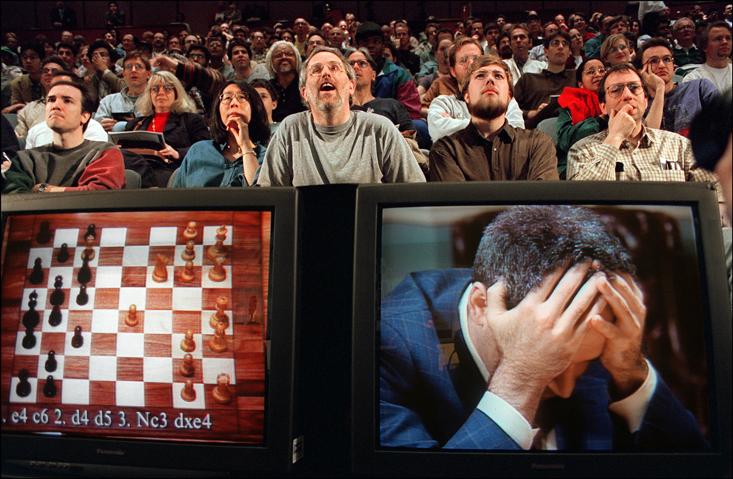On machines as artistic partners
The machine as collaborator, rather than muse or medium is a new approach to artistic creation with technology.
In Erik Brynjolfsson and Andrew McAfee‘s book The Second Machine Age they recount the rise and fall and rise again in interest in chess playing, following the introduction of chess-playing computers.
In the late 70s and 80s early chess playing toys and software games brute-forced their way to giving decent chess players a decent game. But following the introduction of IBM’s Deep Blue and the high profile wins against chess’s own super computer Gary Kasparaov, it was felt that something had been lost in the game and that chess playing computers were now superior. People associated the computer’s ability to calculate every possible scenario almost instantly with the puny human capability and concluded the game was literally up.
Paraphrasing Mark Twain when he noted that something of the beauty of the Mississippi had been lost when he had learned the analytic knowledge to successfully navigate it, chess had a similar problem.
However, since this period a new kind of chess playing has emerged – Freestyle Chess. This is chess played where the human may have access to a chess-playing computer so the two collaborate but with the human making the final decisions. Surprisingly, given the inferiority of what was thought humans brought to the game, freestyle players now regularly beat even the most advanced chess computers.
It appears humans raise their game (and the whole game) when they augment their capabilities with technology.
This idea of human augmentation, rather than replacement was pioneered by Doug Englebart in the 60s and led him to invent, among other important devices, the computer mouse. He believed, like Marshall McLuhan, that technology was an enhancement, an extension of man.
So why not art? And not as a medium or a comment on technology, as a bona fide artistic, I’ve got skills you haven’t, collaborator.
It requires a shift in thinking. Like it or not, freestyle chess has now raised the overall game. Traditional human to human chess is still chess, but it’s lost something of its quality. Because you can’t unmake freestyle chess, traditional chess is now more about human skill / craft and less about pushing the boundaries of the game of chess. There is a quaintness, a retro beauty about it, in the same way that there is in letterpress typesetting and the old Linotype hot lead machines.
There is a need to separate the player from the game. The artist from the art. In so-doing the work becomes not about the skill, craft or capability of the individual but their capability to move the whole game forward.
The purpose of art is to move the whole culture forward, otherwise it’s indulgent therapy for the artist. We have seen some unexpected green shoots in this field with the Picbreeder machine learning project, but it is very early days.
I personally can’t wait to see what a fully technologically augmented artist will produce.


